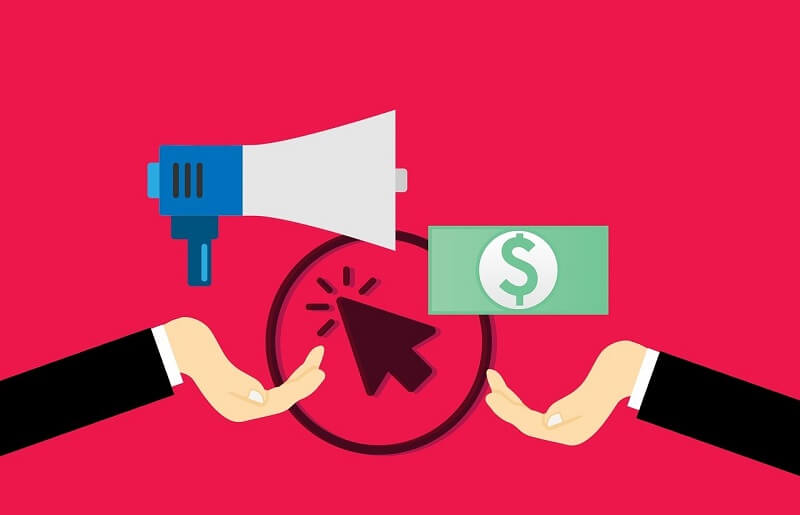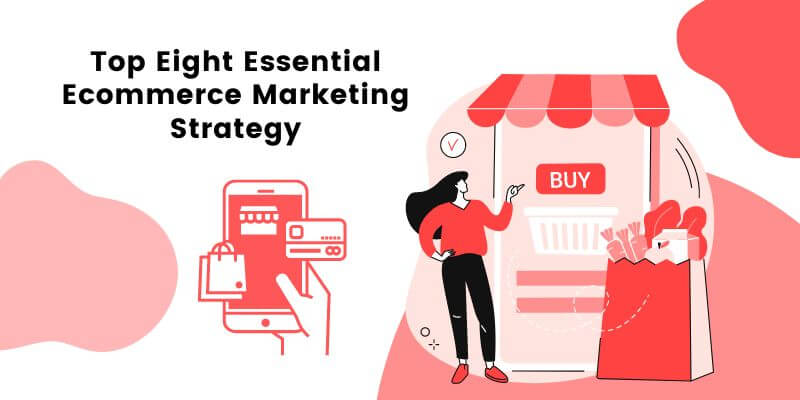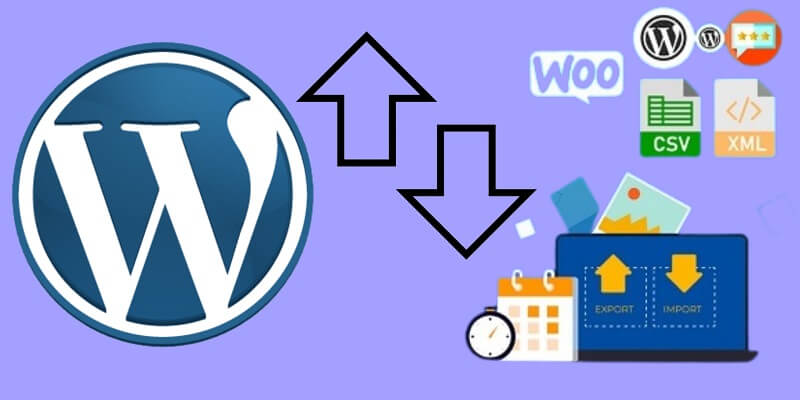Which Essential Ecommerce Marketing Strategy is time- and money-effective?
Your online retail firm must stay current with the latest Ecommerce Marketing Strategy, regardless of whether it is just getting started or has grown to the point where it can sustain a loyal client base. Moreover, creating and launching an e-commerce website is a significant accomplishment for your company. Thus, it’s essential to spend money on an efficient website design and e-commerce promotion plan. We will tell you the top Eight Essential eCommerce Marketing Strategy, In addition to all the organization, using SSL encryption to secure the benefits of your communications and develop customer trust.
Here you can find some best e-commerce platforms that will help you to make your site more approachable to your clients to better scale your business.
Take note of the top Eight Essential E-commerce Marketing Strategy below:
1. Create unique content
Producing content for an e-commerce website is the first stage in its setup. Producing unique, interesting, and high-quality content will position you for success by connecting with your audience in a way that encourages them to engage with you, make purchases from you, and stay loyal.
Use your imagination. Be creative.
However, promoting original content fantastically leaves an impression on users, makes a point, and sparks captivating thoughts. Also, differentiating between content that engages users and content that turns them off requires navigating a thin line.
Why not go the additional mile, work a little more, and produce something truly captivating? It’s a long-lasting e-commerce marketing strategy. For years to come, one or two well-written pages can provide income.
What needs to be written?

First, at the very least, include educational information on your main website pages, such as your homepage, about, and policies (shipping, warranties, etc.).
Next, it’s critical to add product content to your online store. Write original descriptions for each product you start with, ranking them according to your highest-earning or best-selling items. Don’t Only use basic wording from the manufacturer. Describe it, its main features, and why it’s better.
Also, check out the category sites as well. These have excellent SEO potential as well (more on that below). Here is the complete detail of SEO and How it Works. This will help you to understand why SEO Potential is Important. This is the place to describe a product category (men’s athletic shoes, for example) and offer links to related goods so that the visitor can locate what they’re looking for. FAQs are a useful resource on category sites for answers to segment-specific queries.
It’s time to take action now.
Using the authority of your e-commerce business (shoes, for example), write blog entries that will enlighten and entertain your current followers while drawing in new ones.
Include rich material on your website as well. Explainer or product demo videos are ideal for e-commerce.
Consult your clients if you’re having trouble coming up with ideas. For example, employ a user feedback product that allows for pop-up chat interactions to ask questions.
- What are you trying to find?
- What specific information are you looking for?
- Which inquiries do you have?
- Why did you come here today?
Your objective is to focus on content themes that interest your audience because they tell you so. We’ll talk about content marketing below, with more content beyond basic “money pages.”
2. Improve the design of your e-commerce website.
It’s crucial to test your e-commerce website’s design, content, and conversion element placement after launching or rebuilding it. You want to ensure that when clients visit your website, they find it easy to navigate, that they are compelled to buy your products, and that it is quite evident how to do so.
Also, It is recommended that you test the language used on your product and landing pages, as well as the language used in your conversion components and even the thoughtful arrangement of your symbols and other elements. For this, you can employ a variety of usability testing techniques.
3. Content Marketing

No other marketing strategy can bring about the kind of positive attention, interaction, and long-lasting conversions that proper e-commerce content marketing can. You can make sure that your audience is always getting fresh information that is important to them by producing and advertising original content.
Your website’s content consists of pages such as the home page, category pages, product pages, and so forth. Contrarily, content marketing is the promotion of material that is specially designed to draw in customers.
Moreover, make a list of the various kinds of content you want to produce by brainstorming ideas with your team. These include mailings, videos, and blog entries. Additionally, ensure that you are making the most of your marketing budget by seeking advice from professionals and outsourcing tasks as needed. This is the most underrated “Ecommerce Marketing Strategy.”
4. Marketing on social media

Social media marketing for e-commerce is an extremely effective tool. It enables you to have direct, open communication with your market, consumers, and industry. Social media may help you expand your consumer base, increase website traffic, and foster engagement and conversation.
Also, using several social media channels for various objectives builds a strong online presence for your business and expands the scope of your skills and attempts. In the end, this will assist you in meeting the demands of your clients in a way that gradually expands your company.
Because audience trust is built through consistency, it’s critical to keep your company’s tone and personality consistent across social media. Make sure your team is in agreement with your company’s communication style so that your outreach activities are cohesive and help you establish and preserve brand recognition and authority.
5. Direct communication via email

Email marketing is one of the best Ecommerce Marketing Strategy and a way to communicate with your consumer base. The success of email marketing is the reason it has been around for so long, even if you must exercise extreme caution when it comes to the content of your emails and who you include in your outreach.
Include valuable information in your emails to ensure maximum audience engagement. Offer worthwhile promos, be as approachable as you can, and take advantage of the chance to mingle.
Be honest about your firm and share information about new features, products, events you attend, and your business’s activities. To assess your clients’ interest and keep them interacting with your emails, you need to establish a personal connection with them.
As usual, be sure to keep an eye on the metrics related to your email marketing campaigns and any other components of your e-commerce marketing plan. To deliver a pleasing message and experience, don’t forget to adhere to email design best practices.
6. Search engine optimization (SEO) for e-commerce

An important and labor-intensive approach to enhancing an e-commerce website is ensuring it is search engine optimized. It is now more crucial than ever to make sure your website is updated frequently with relevant and high-quality content, enhances user experience (UX), and is optimized for maximum error-free performance in light of current Search Engine Optimization (SEO) guidelines.
However, your website should have rich, trustworthy content that gives users relevant, helpful information that matches their search terms. For instance, it makes sense to offer thorough product information and perhaps even host areas of your website with copious amounts of content that expound on the themes of camping, supplies, or similar issues if you run an online store selling camping gear.
When you employ keywords naturally in your content, search engines will recognize your website as a relevant result when visitors are looking for a certain term. One of the most affordable Ecommerce Marketing Strategy with the highest return on investment is search engine optimization.
7. Pay-per-click (PPC) online advertising

Any pay-per-click marketing campaign consists of these three fundamental components: the landing page, the offer, and the advertisement.
To keep the lead interested, all three need to be in perfect harmony and synchronization. To move a visitor through your conversion funnel, the landing page needs to be an extension of your advertisement, offering the reward that was promised when they clicked on the advertisement.
Moreover, for keywords to show up in search engine results, they must also be modified. These keywords most likely have a role in the other aspects of your e-commerce marketing campaigns.
Don’t include any extraneous bells and whistles or distracting elements on the landing page. Additionally, remember that your landing page is the best location to highlight the advantages of your product to potential buyers.
8. Make mobile friendly
Ensuring that your website adapts to different user layouts is crucial. The tide of internet usage is turning toward mobile consumers, particularly in e-commerce. Therefore it’s critical to adapt to meet their needs and ensure a positive user experience (UX) for all.
Visitors to your website want the whole experience; they do not want to be sent to an app or online version of it. Therefore, make sure you meet their expectations and spend in improving your website to the point where it is responsive. Because a user that bounces isn’t worth anything, UX techniques are frequently the most important e-commerce marketing strategy you can have!
Additionally, you can target mobile consumers, especially by using mobile marketing strategies. Geo-targeting is one of the most well-liked marketing strategies; it involves showing advertisements to mobile users according to their location. By using this strategy, you may connect with clients who are near your establishment and offer them a reason to visit or make a purchase.
Conclusion:
Which Ecommerce Marketing Strategy are you going to use?
Any successful eCommerce website must keep up with the most recent marketing trends and strategies. It’s critical to provide your target market with items and content that are meaningful, engaging, and relevant. If you run into difficulties putting your plans into practice, you can collaborate with a leading eCommerce website development business.
Make sure you are working with a team of professionals who have different skill sets and use a range of approaches to reach out to your clients. You might come up with fresh suggestions for enhancing your present outreach strategies and campaigns if you pay attention to everyone’s opinions.
As usual, be sure to keep an eye on your website analytics to look for patterns, maintain website optimization, and monitor your outcomes!
You may increase your conversion rate and draw in long-term, steady business by using the appropriate combination of marketing strategies. But keep in mind that there is never an end to the process of optimizing eCommerce; you conduct tests, implement effective adjustments, and then develop new theories. Developing your e-commerce website marketing manager skills will help you advance and stand out in the job market.



